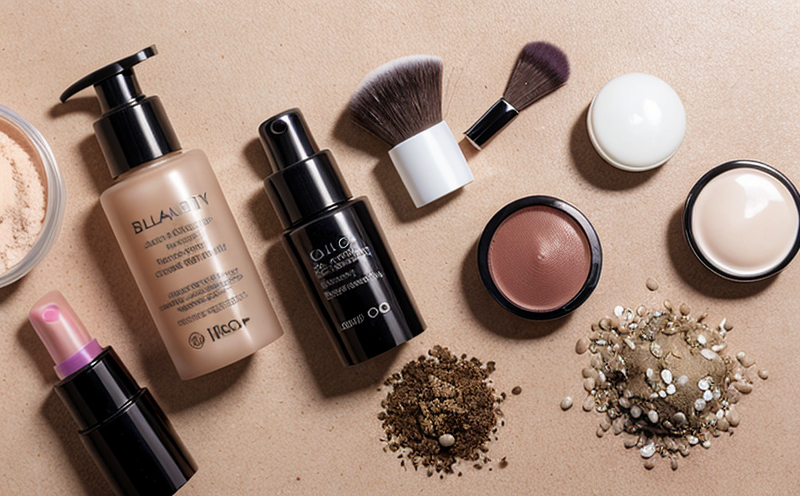OECD 201 Algal Growth Inhibition Testing in Cosmetics
The OECD (Organisation for Economic Co-operation and Development) 201 test guideline is a pivotal standard used to assess the environmental impact of cosmetic products, particularly focusing on their potential to inhibit algal growth. This test evaluates whether ingredients or formulations may pose risks to aquatic ecosystems by interfering with the photosynthesis process in algae.
The OECD 201 Algal Growth Inhibition Test (AGIT) is a critical component in the regulatory framework aimed at ensuring that cosmetic products do not contribute to environmental degradation. It is essential for manufacturers and formulators to demonstrate compliance with international standards, thereby protecting both human health and the environment.
Algae play a crucial role in aquatic ecosystems by producing oxygen through photosynthesis and serving as primary producers in food chains. Their growth is sensitive to external factors such as light, temperature, pH levels, and nutrient availability. Cosmetic products containing certain ingredients can alter these conditions, potentially leading to reduced algal growth rates.
The OECD 201 AGIT involves exposing algae to different concentrations of the test substance over a defined period. The growth rate is then measured using various analytical techniques, including spectrophotometry or fluorometry. By comparing the observed inhibition levels with control samples not exposed to the test substance, researchers can determine the extent of potential environmental harm.
This testing method aligns closely with broader sustainability goals within the cosmetic industry. Many companies are increasingly focusing on formulating products that have minimal adverse effects on the environment. The OECD 201 AGIT helps manufacturers identify and mitigate any risks associated with their formulations early in the product development process.
Compliance with this standard is not only a regulatory requirement but also reflects a commitment to responsible environmental stewardship. By adhering to these guidelines, cosmetic companies can ensure that their products meet stringent international standards for environmental safety.
The OECD 201 AGIT provides valuable insights into the potential impacts of cosmetic ingredients on aquatic ecosystems. It enables researchers and developers to make informed decisions about ingredient selection and formulation adjustments, ultimately contributing to more sustainable product development practices.
Applied Standards
The OECD 201 Algal Growth Inhibition Test is recognized globally for its reliability in assessing the environmental impact of cosmetic products. This test aligns with several internationally accepted standards:
- OECD Guidelines for the Testing of Chemicals (TG 201): These guidelines provide a framework for conducting tests that assess the potential effects of chemicals on aquatic organisms.
- ISO 16489-3:2015: This ISO standard specifies procedures for testing the acute toxicity of chemical substances to algae, including methods similar to those used in the OECD 201 AGIT.
- ASTM D7765: American Society for Testing and Materials (ASTM) standards are widely recognized and provide additional guidance on algal growth inhibition testing.
The consistency between these standards ensures that results from the OECD 201 AGIT can be reliably compared across different laboratories, enhancing confidence in the data generated during environmental assessments.
Eurolab Advantages
At Eurolab, we specialize in providing comprehensive testing services tailored to meet the unique needs of the cosmetic industry. Our expertise extends beyond just executing tests; we offer a full suite of support services designed to help our clients navigate complex regulatory landscapes effectively.
- Expertise and Experience: With years of experience in conducting OECD 201 AGIT, Eurolab ensures that each test is conducted according to the highest standards. Our team comprises highly skilled scientists with deep knowledge in environmental toxicology and chemical analysis.
- State-of-the-Art Facilities: We operate cutting-edge laboratories equipped with advanced instrumentation such as UV-Vis spectrophotometers, fluorimeters, and other essential tools required for precise measurements during the AGIT process.
- Dedicated Client Support: Our commitment to excellence is reflected in our personalized approach. Whether you need assistance with test design, sample preparation, or interpretation of results, our team is here to support you every step of the way.
- Comprehensive Reporting: Eurolab prides itself on delivering detailed and actionable reports that provide clear insights into the environmental impact assessment of your cosmetic products. These reports are invaluable for decision-making purposes within regulatory compliance frameworks.
By choosing Eurolab, you gain access to a team dedicated to helping you meet rigorous standards while ensuring that your products contribute positively to environmental sustainability.
Use Cases and Application Examples
- New Product Development: During the early stages of product development, formulators can use AGIT results to identify ingredients or formulations that could pose risks to aquatic ecosystems. This information helps guide formula adjustments to minimize any potential negative impacts.
- Ingredient Screening: When introducing new raw materials into a cosmetic formulation, it is essential to evaluate their environmental compatibility. The OECD 201 AGIT can help screen out ingredients likely to cause harm while allowing the inclusion of those deemed safe for aquatic environments.
- Regulatory Compliance: Meeting regulatory requirements is crucial for any company operating within the cosmetics sector. Conducting regular AGIT tests ensures ongoing compliance with international standards, reducing the risk of legal challenges or product withdrawals.
- R&D Optimization: Continuous improvement in cosmetic formulations requires ongoing research and development efforts. By incorporating AGIT into your R&D workflow, you can systematically refine products to enhance their environmental performance without compromising efficacy or safety.
These applications highlight the versatility and importance of the OECD 201 Algal Growth Inhibition Test in ensuring that cosmetic products contribute positively to environmental sustainability.





